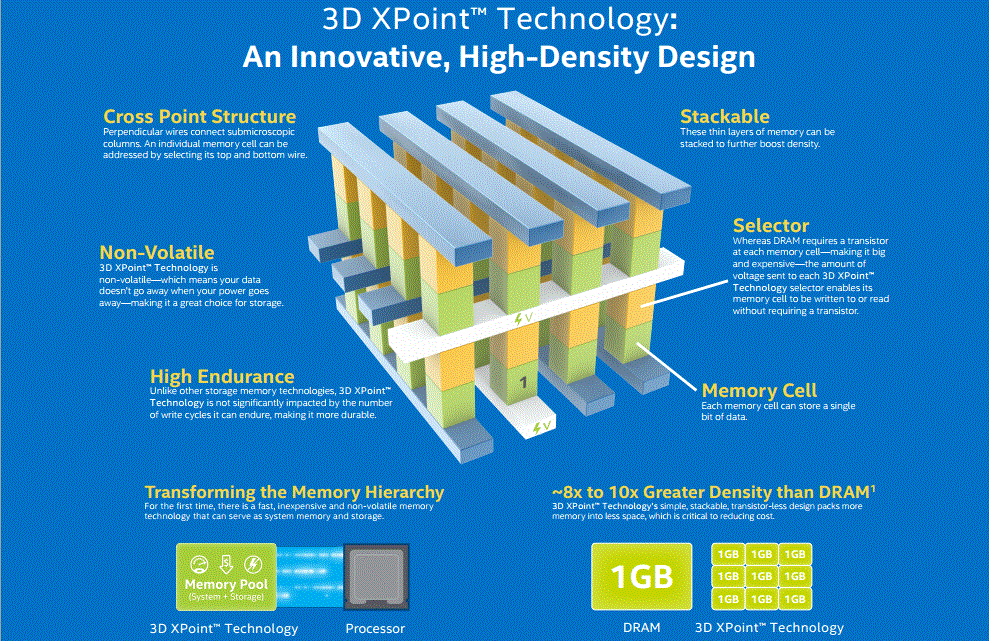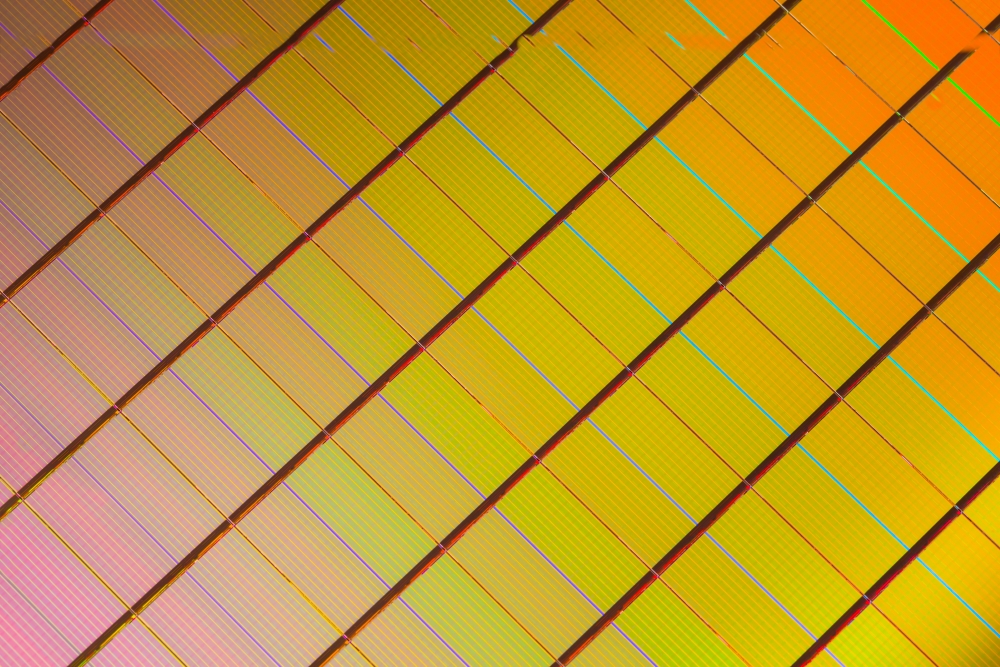Today Intel and Micron jointly announced the fruits of their co-development efforts: 3D XPoint memory. 3D XPoint is described as:
The innovative, transistor-less cross point architecture creates a three-dimensional checkerboard where memory cells sit at the intersection of word lines and bit lines, allowing the cells to be addressed individually. As a result, data can be written and read in small sizes, leading to faster and more efficient read/write processes. (emphasis added)
The companies describe the technology as the first new type of memory introduced in the last 25 years. We have heard of promising technologies such as phase change memory for years but with little commercial success. With both Intel and Micron researching for years and joining forces as early (at least) as 2012, we expect this to be a commercially viable product. The companies also attested to the fact that the 3D XPoint already had easily replicable structures for manufacturing.

Intel also confirmed what we suspected: SAS and SATA are dying. At the event the fact that Intel’s recent focus has been on the NVMe / PCIe product lines in the flash space shows that the days of measuring throughput in MB/s are limited at best. PCIe offers so much more bandwidth and lower latency over SAS or SATA that it is seen as a candidate for the initial batch of 3D XPoint. Listening to the discussion, there were very mildly veiled hints that post 2016 we would see 3D XPoint get a faster interconnect.
When asked about the impact to 3D NAND roadmaps, the answer was that there was no impact in the foreseeable future. Adding that 3D NAND is a viable lower cost/ bulk storage medium.
Our take: Expect the 3D XPoint technology to hit at price points closer to RAM than current SSD NAND pricing per GB. Expect Intel to continue de-prioritizing SAS and SATA connectivity in favor of PCIe and new interconnects in the future moving 3D XPoint closer to the processor with more bandwidth and lower latency than today’s PCIe can offer with pricing trending towards NAND levels in the future.





Turns out this is licensed from Crossbar’s 3D stacked RRAM technology. https://www.crossbar-inc.com/products/3d-rram/